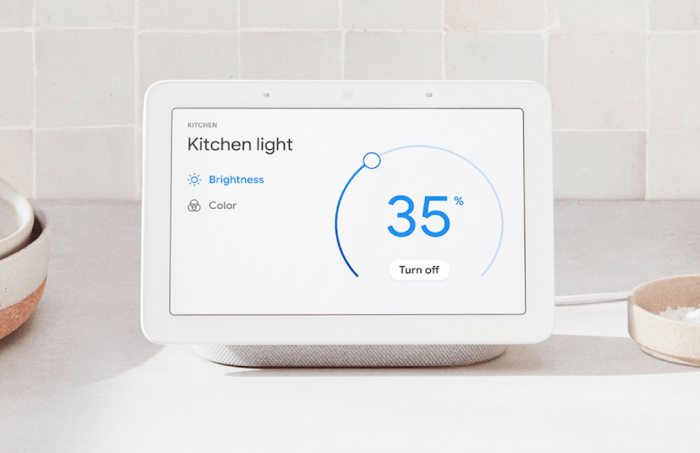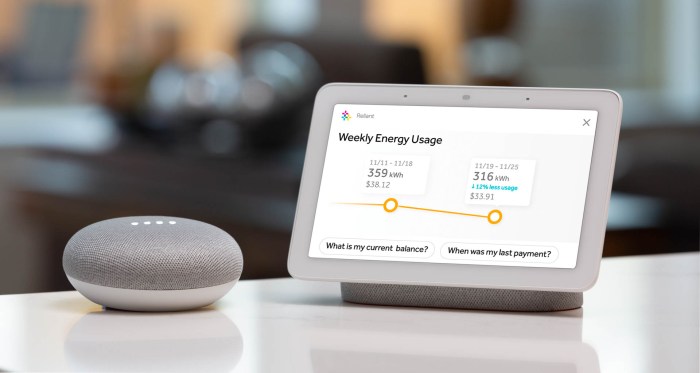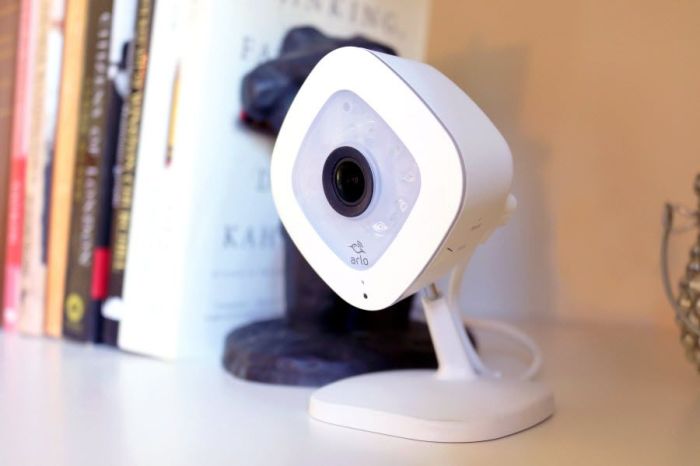smart home google sets the stage for this enthralling narrative, offering readers a glimpse into a story that is rich in detail and brimming with originality from the outset. This technology empowers users to control their home environment with unparalleled ease, integrating various devices through the powerful Google Assistant. As we dive deeper, we’ll explore the remarkable advantages of Google’s smart home ecosystem and how it has transformed the way we interact with our living spaces, making convenience and efficiency a part of everyday life.
From the seamless functionality of devices to the history of Google’s involvement in this field, the journey into smart home technology unveils a world where innovation meets practicality. With the rise of smart devices, Google has led the charge, making homes not just smarter, but also more secure and connected. Join us as we uncover the top products, their features, and the future possibilities that lie ahead in this rapidly evolving landscape.
Overview of Smart Home Google Technology

Smart home technology powered by Google represents a significant leap in how consumers interact with their living spaces. This ecosystem integrates various devices and systems, allowing for centralized control and automation, enhancing convenience and energy efficiency. Through Google Assistant and a range of compatible devices, users can effortlessly manage their homes with voice commands or through mobile applications.Google’s smart home technology encompasses a variety of functionalities, including lighting control, temperature regulation, security monitoring, and entertainment management.
By employing Internet of Things (IoT) principles, devices such as smart speakers, thermostats, cameras, and lights communicate with each other and are managed through a singular interface. This interconnectedness streamlines operations, enabling users to create customized environments that respond to their habits and preferences.
Core Functionalities of Google Smart Home Devices, Smart home google
The core functionalities of Google smart home devices revolve around automation, integration, and user interaction. These aspects include:
- Voice Control: Google Assistant serves as the central hub for voice commands, allowing users to control multiple devices simultaneously through simple verbal instructions.
- Remote Access: Users can monitor and control their smart home devices from anywhere using the Google Home app, providing convenience and peace of mind.
- Automation Routines: Users can create routines that trigger multiple actions with one command, enhancing efficiency and user experience. For instance, saying “Good morning” can turn on lights, adjust the thermostat, and start the coffee maker.
- Compatibility: Google smart home devices integrate with a wide range of third-party products, expanding functionality and allowing users to build a tailored smart home ecosystem.
Advantages of Using Google Smart Home Devices
Employing Google smart home devices provides numerous advantages, significantly improving the lifestyle of users. Some of these benefits include:
- Energy Efficiency: Smart devices can help monitor and reduce energy consumption, leading to lower utility bills. For instance, smart thermostats can learn user schedules and adjust heating and cooling accordingly.
- Enhanced Security: Google smart home solutions include security cameras and smart locks that improve home security. Users can receive real-time alerts and monitor their homes remotely.
- Convenience: The ability to control various home functions through voice or app commands simplifies daily tasks, making it easier for users to manage their environments.
- Customizable Experiences: Users can personalize settings and automate their routines, tailoring their homes to fit their lifestyle and preferences.
History of Google’s Involvement in Smart Home Technology
Google’s journey into smart home technology began in earnest with the acquisition of Nest Labs in 2014. Nest, renowned for its smart thermostats, laid the groundwork for Google’s expansion into the smart home market. This acquisition allowed Google to diversify its technological offerings and enhance consumer engagement within their homes.Following the Nest acquisition, Google launched Google Home in 2016, a smart speaker that served as a central controller for smart home devices.
Over the years, Google has continued to innovate, introducing the Google Assistant and expanding its compatibility with numerous devices. Additionally, initiatives like the Works With Google Assistant program have encouraged third-party manufacturers to create products that seamlessly integrate with Google’s ecosystem.As smart home technology evolves, Google remains at the forefront, continuously enhancing user experiences and expanding the capabilities of its devices.
Through ongoing investments and innovations, Google is shaping the future of how we interact with our living environments.
Popular Google Smart Home Products

The rise of smart home technology has transformed how we interact with our living spaces, and Google has been at the forefront of this revolution. With a range of innovative products designed to enhance convenience, security, and connectivity, Google smart home devices integrate seamlessly into everyday life. Below, we explore five of the most popular Google smart home products and their standout features.
Top Google Smart Home Devices
Google’s smart home ecosystem includes a variety of devices that cater to different needs and preferences. Here are five of the most popular products:
- Google Nest Hub: This smart display not only controls your smart home devices but also displays photos, provides weather updates, and offers recipe suggestions. Its voice-controlled Google Assistant allows you to manage tasks hands-free.
- Google Nest Mini: A compact smart speaker that delivers high-quality sound and voice recognition. It serves as a control center for other devices, providing music, news updates, and smart home management.
- Google Nest Thermostat: This smart thermostat learns your heating and cooling habits to optimize energy usage. Its remote control feature allows you to manage your home’s climate from anywhere using your smartphone.
- Google Nest Cam: A security camera that offers 24/7 live streaming and intelligent alerts. With features like night vision and two-way audio, it enhances home security and keeps you connected with what matters.
- Google Nest Doorbell: This video doorbell provides high-definition video and alerts you when someone is at your door. It integrates with Google Assistant for voice commands and notifications, enhancing home security and communication.
The importance of these devices lies in their ability to integrate with one another, creating a cohesive smart home experience that is not just convenient but also energy-efficient and secure.
Integration of Google Assistant with Smart Home Devices
Google Assistant serves as the central hub for managing Google smart home devices, allowing for voice control and automation. By integrating with various third-party devices, Google Assistant enhances user experience and convenience. Users can issue voice commands to adjust lighting, change the thermostat settings, or even lock doors, all through a single command. This integration extends beyond Google products; a multitude of other smart home devices are compatible with Google Assistant, enabling users to customize their smart home setup according to their preferences.
For example, you might say, “Hey Google, turn on the living room lights,” and the assistant will communicate with the connected lights to execute the command.
Comparison with Competitors in the Market
The smart home market is competitive, with several key players offering comparable products. Below is a comparative analysis of Google smart home products versus those from leading competitors like Amazon and Apple.
| Feature | Amazon | Apple | |
|---|---|---|---|
| Voice Assistant | Google Assistant | Alexa | Siri |
| Smart Display | Nest Hub | Echo Show | HomePod mini (no display) |
| Smart Thermostat | Nest Thermostat | Ecobee | HomeKit Compatible Thermostats |
| Security Camera | Nest Cam | Ring | HomeKit Secure Video |
| Smart Speaker | Nest Mini | Echo Dot | HomePod mini |
This table highlights how Google’s integration of its voice assistant with a variety of smart devices sets it apart from competitors. While Amazon focuses heavily on its Alexa ecosystem and Apple emphasizes privacy and integration with its devices, Google aims for a balanced approach, offering robust features and seamless compatibility across a wide array of devices.
Setting Up a Google Smart Home System: Smart Home Google
Setting up a Google Smart Home system can transform your living space into a more convenient, efficient, and enjoyable environment. With a series of straightforward steps, you can easily integrate various devices into a cohesive smart home platform that responds to your needs. This guide will provide you with the essential requirements and step-by-step instructions to create a seamless setup.
Necessary Requirements for Setup
Before initiating the setup, it’s crucial to gather the necessary components to ensure a smooth installation process. Here is a list of the requirements you will need:
- Google Home Device: A Google Home, Nest Hub, or Nest Mini serves as the central hub for controlling your smart home devices.
- Wi-Fi Network: A stable and strong Wi-Fi connection is vital as all your devices will connect over this network.
- Smart Devices: Ensure that you have compatible smart devices, such as smart bulbs, cameras, plugs, and thermostats.
- Google Home App: This app, available on Android and iOS, is necessary for device setup and management.
- Google Account: A Google account is required to access all Google Home functionalities.
Step-by-Step Guide to Setting Up the System
To successfully set up your Google Smart Home system, follow these detailed steps:
1. Download the Google Home App
Start by downloading the Google Home app from the Google Play Store or Apple App Store.
2. Log in to Your Google Account
Open the app and sign in using your Google account credentials. This will sync your devices and preferences.
3. Set Up Your Google Home Device
Plug in your Google Home device and wait for it to power on. The app will prompt you to set it up. Follow the instructions on-screen to connect it to your Wi-Fi.
4. Add Smart Devices
Once your Google Home is set up, tap the “+” icon in the app to add new devices. Select “Set up device,” then choose “Have something already set up” if your device is compatible.
5. Follow Device-Specific Instructions
Each smart device may have specific setup instructions. Follow the prompts provided by the app and the manufacturer of each device to ensure proper connection.
6. Create Routines and Groups
After all devices are connected, you can create routines to automate tasks. For example, you can set a routine for “Good Morning” that turns on lights, adjusts the thermostat, and starts your coffee maker.
7. Test Device Functionality
Finally, test each connected device using voice commands through your Google Home device to ensure they are functioning as expected.
Connecting Various Devices for Optimal Performance
To maximize your Google Smart Home system, it’s important to properly connect and manage your devices. Here are some tips for ensuring optimal performance:
- Ensure Compatibility: Always check that your devices are compatible with Google Home. Look for the “Works with Google Assistant” label on packaging.
- Update Firmware: Regularly update the firmware of your smart devices through their respective apps to ensure the latest features and security patches.
- Organize Device Groups: Group similar devices together for easier control. For example, create a “Living Room” group for all devices located in that area.
- Use Voice Commands Effectively: Familiarize yourself with the available voice commands for your devices to control them efficiently.
- Monitor Network Strength: Ensure your Wi-Fi signal is strong throughout your home, as weak connections can cause devices to lag or disconnect.
“A well-organized smart home is a more efficient and enjoyable space.”
Security Considerations for Google Smart Homes
As the integration of smart technology into our homes becomes more prevalent, securing these devices is essential for safeguarding privacy and personal data. Google smart home products, while convenient, are not immune to security risks. Understanding these risks and adopting best practices can significantly enhance the safety of a smart home environment.
Common Security Risks Associated with Smart Home Devices
The rise of smart home technology introduces several vulnerabilities that can be exploited by cyber threats. Understanding these risks is crucial for homeowners. Common security risks include:
- Weak Default Passwords: Many devices come with easily guessable default passwords, leaving them vulnerable to unauthorized access.
- Insecure Networks: Devices connected to an unsecured Wi-Fi network can be easily compromised by hackers.
- Lack of Encryption: Data transmitted between smart devices and their associated apps may not always be encrypted, making it easier for attackers to intercept sensitive information.
- Outdated Firmware: Devices that are not regularly updated may contain known vulnerabilities that can be exploited by cybercriminals.
Best Practices for Securing a Google Smart Home Environment
Implementing security best practices can significantly reduce risks associated with smart home devices. Homeowners should consider the following measures to enhance security:
- Change Default Passwords: Immediately change default passwords on all devices to strong, unique passwords that combine letters, numbers, and symbols.
- Use a Secure Wi-Fi Network: Ensure your home Wi-Fi network is secured with a strong password and consider setting up a separate network for smart devices.
- Enable Two-Factor Authentication: Use two-factor authentication where possible to add an extra layer of security to accounts linked to smart devices.
- Regularly Audit Devices: Routinely check and remove any devices that are no longer in use or that you do not recognize.
Importance of Regular Software Updates for Device Security
Regular software updates play a critical role in maintaining the security of Google smart home devices. These updates often include important patches that address known vulnerabilities, enhancing both the functionality and safety of the devices.
“Keeping devices updated is one of the simplest yet most effective ways to protect against cyber threats.”
Maintaining a regular update schedule ensures that devices operate on the latest and most secure version of their software. Homeowners should enable automatic updates when available or check for updates manually to ensure their devices are equipped with the latest security enhancements. This proactive approach not only helps in protecting personal data but also enhances the overall performance of smart home systems.
Future Trends in Smart Home Technology

As the smart home market continues to evolve, an array of advancements are anticipated, primarily driven by integration, artificial intelligence (AI), and user-centric innovations. Google, as a major player in this sector, is expected to lead the charge with innovative solutions that enhance automation, connectivity, and overall user experience. The future of smart homes promises to be more intuitive, efficient, and secure, capitalizing on emerging technologies.Artificial intelligence is set to play a pivotal role in the advancement of smart home devices.
It enables devices to learn user preferences over time, allowing for a level of automation that was previously unattainable. This means that devices can not only respond to commands but also anticipate needs, creating a seamless living experience. With AI, smart home devices will analyze data to optimize energy consumption, improve security measures, and enhance user comfort dynamically.
Predictions for Upcoming Advancements
The landscape of smart home technology will witness several key advancements that can significantly alter how devices interact within our living spaces. Below is a table that compares current smart home technologies with future possibilities, shedding light on the expected transformations.
| Current Technology | Future Possibilities |
|---|---|
| Basic Voice Commands | Contextual Understanding and Natural Conversations |
| Remote Device Control via Apps | Proactive Device Management with Predictive Analytics |
| Standalone Devices | Interoperable Ecosystems with Enhanced Integration |
| Static Device Settings | Adaptive Settings Based on User Behavior and Preferences |
| Basic Security Alerts | Real-Time Surveillance with AI-Driven Threat Detection |
The integration of AI into smart homes will likely lead to devices that can communicate with each other more effectively, creating a cohesive ecosystem. For instance, a smart thermostat could learn from the patterns of your routines, adjusting the temperature automatically based on when you wake up or leave for work. In addition, enhanced security systems using AI could provide real-time alerts and offer detailed insights into household activity, securing homes more effectively than traditional systems.
“AI will empower smart home devices to intuitively adapt to user needs, ensuring a tailored living experience.”
Through these advancements, the intersection of smart home technology and artificial intelligence is set to redefine the standards for convenience, safety, and energy efficiency in our homes, creating a more responsive and user-friendly environment.